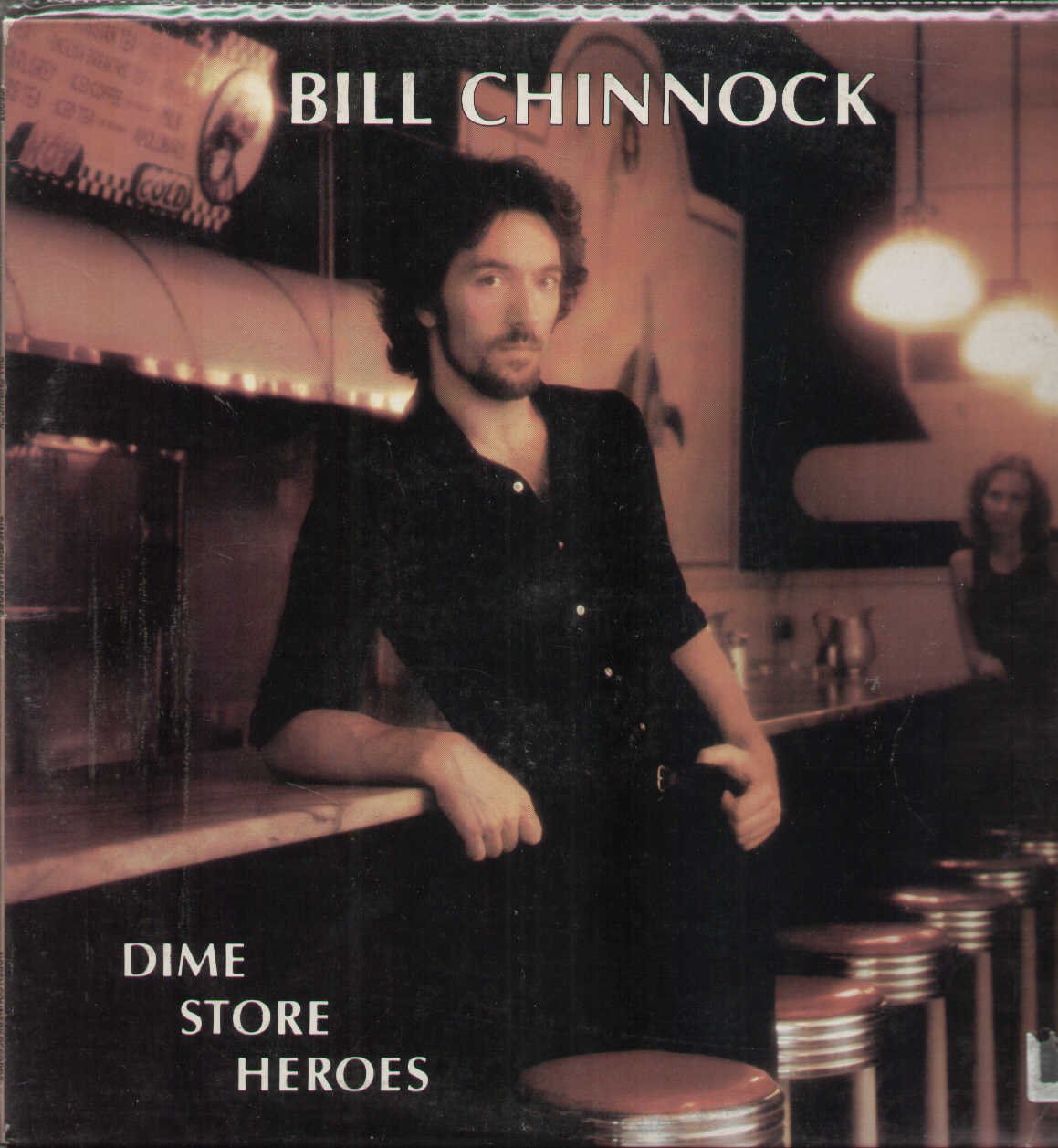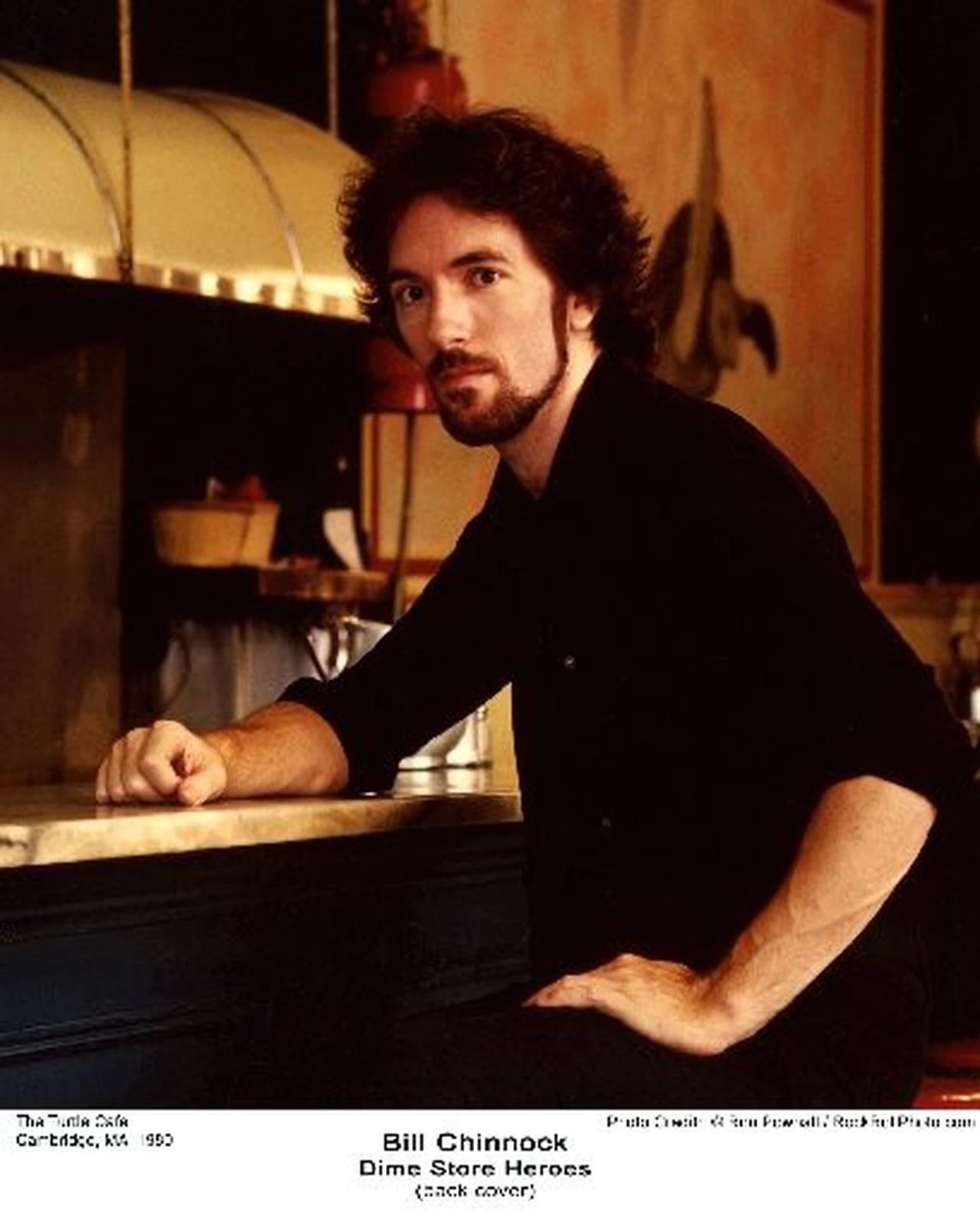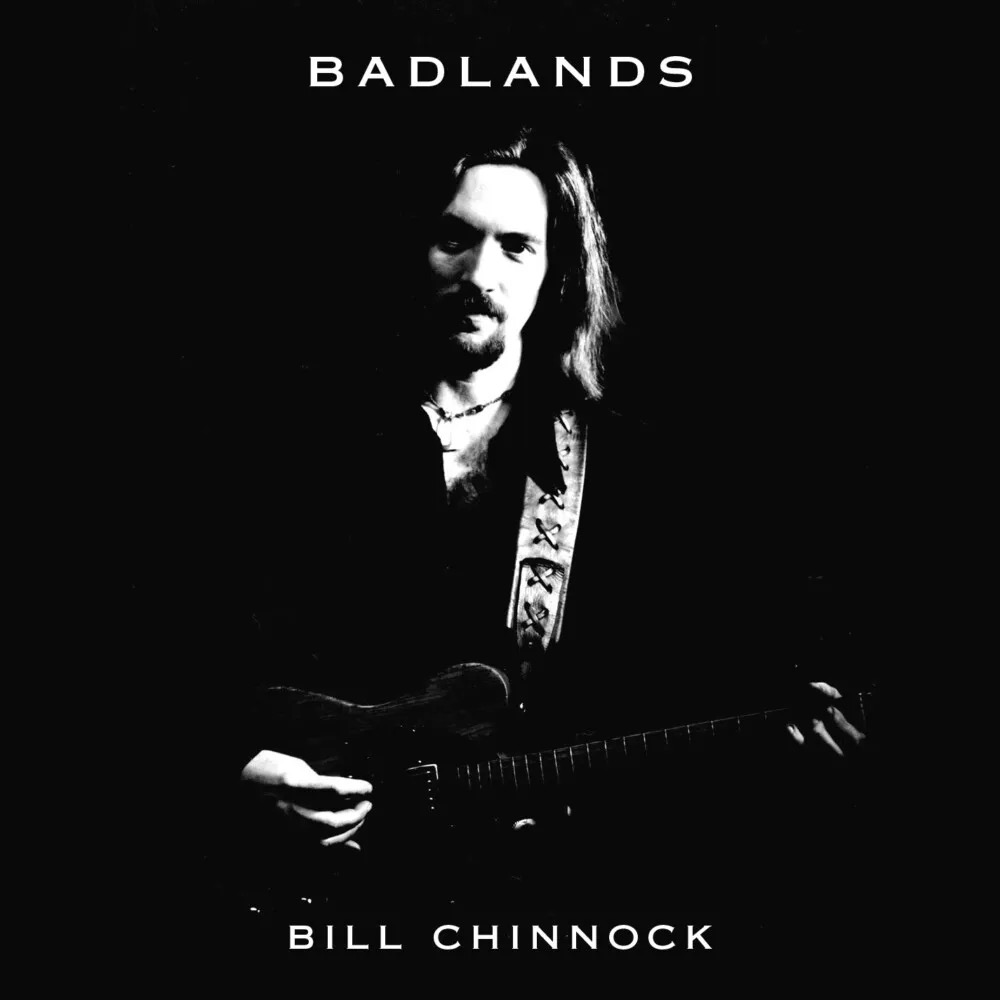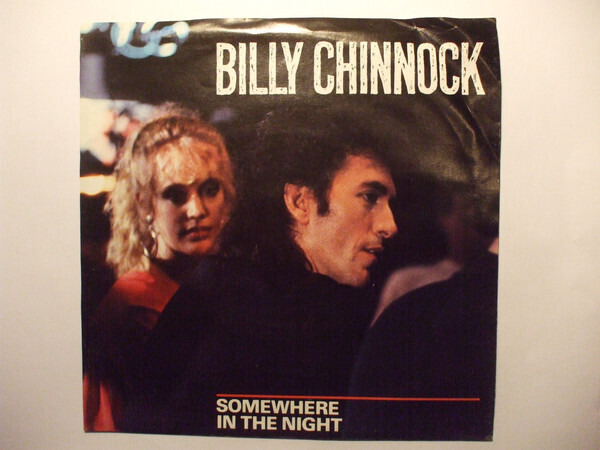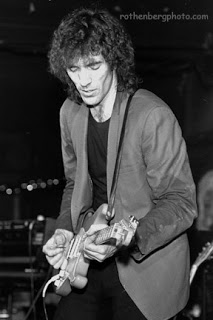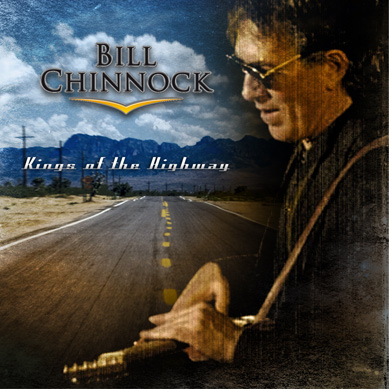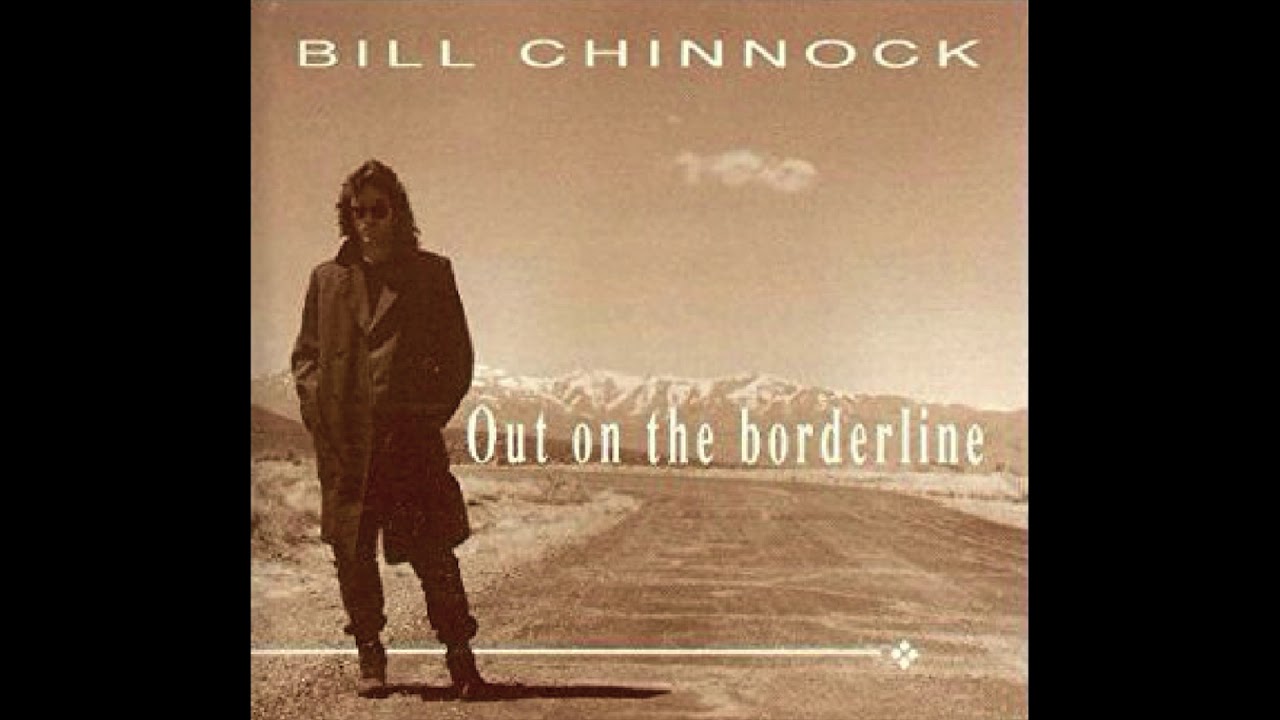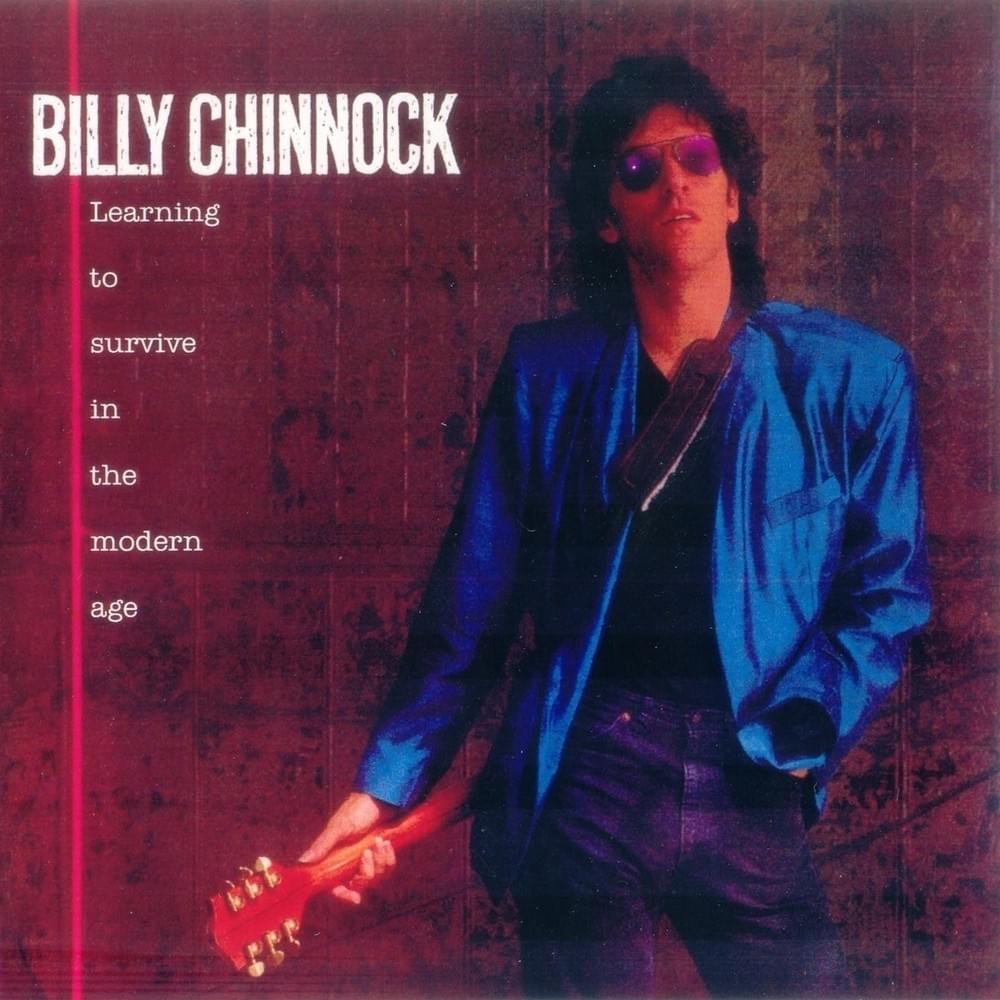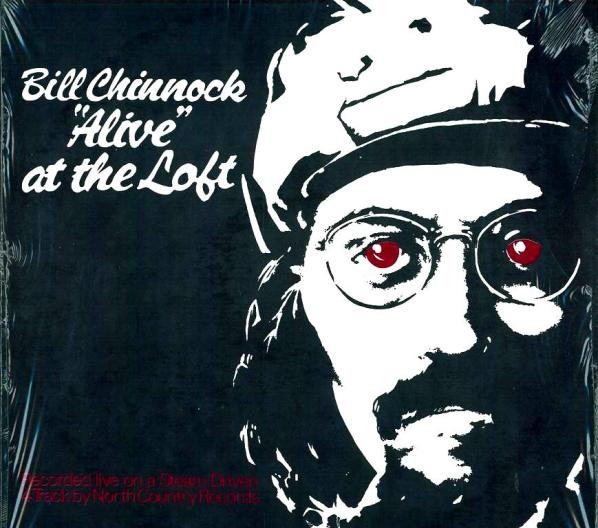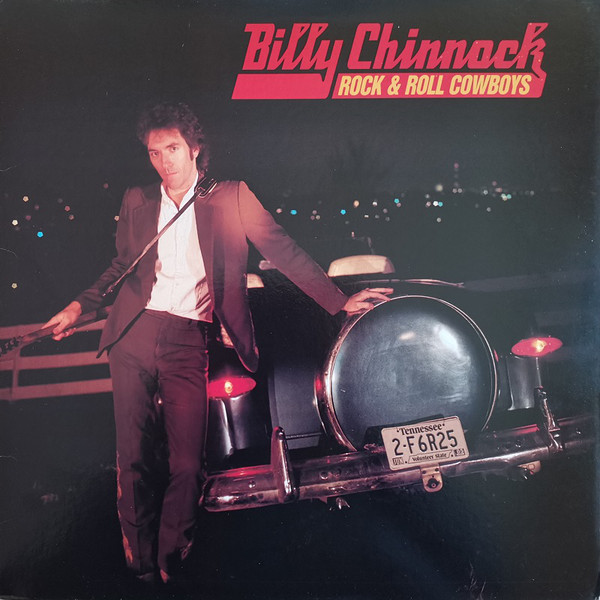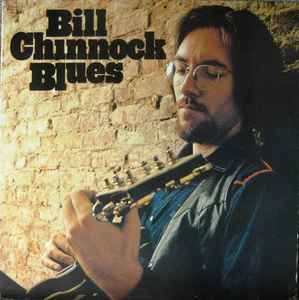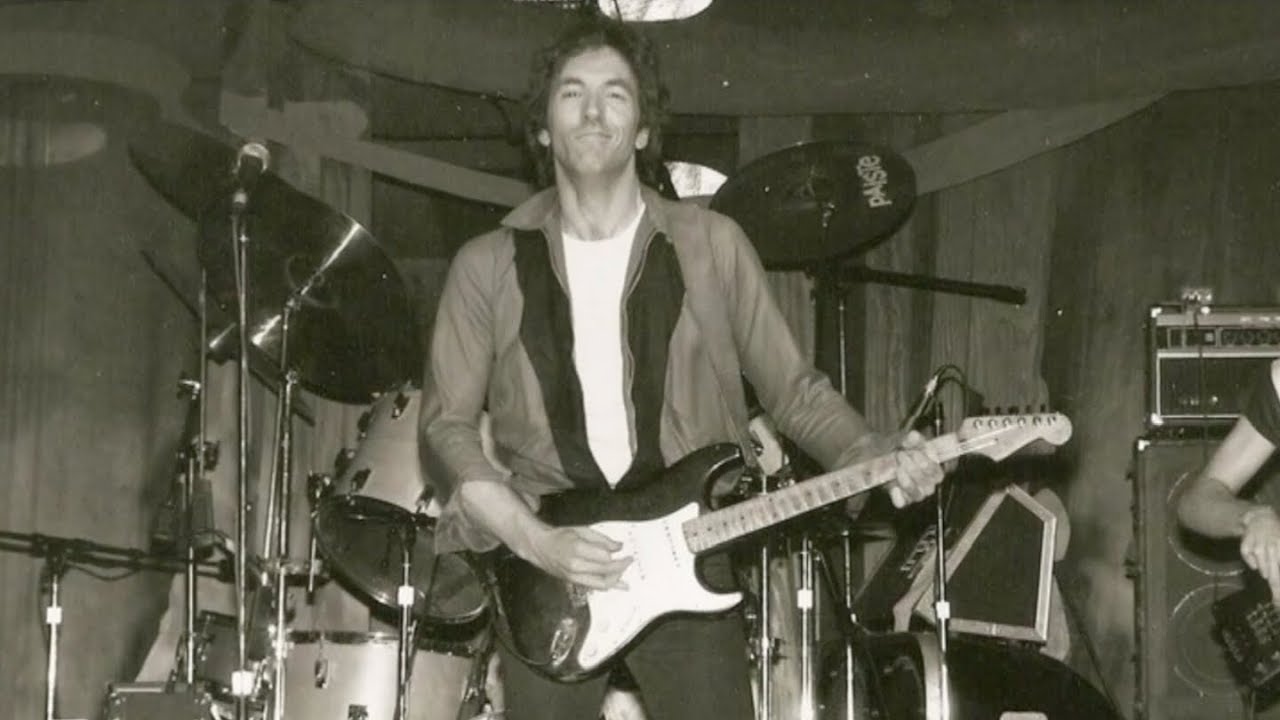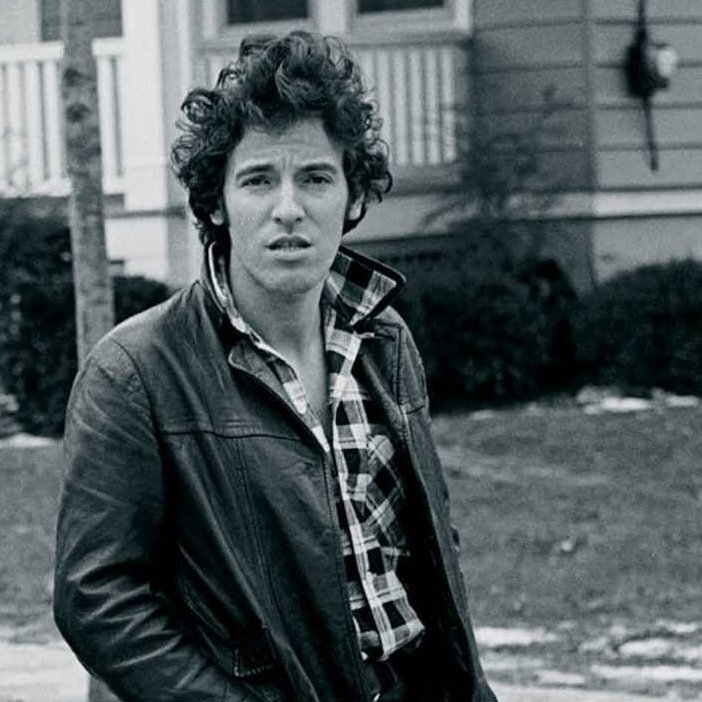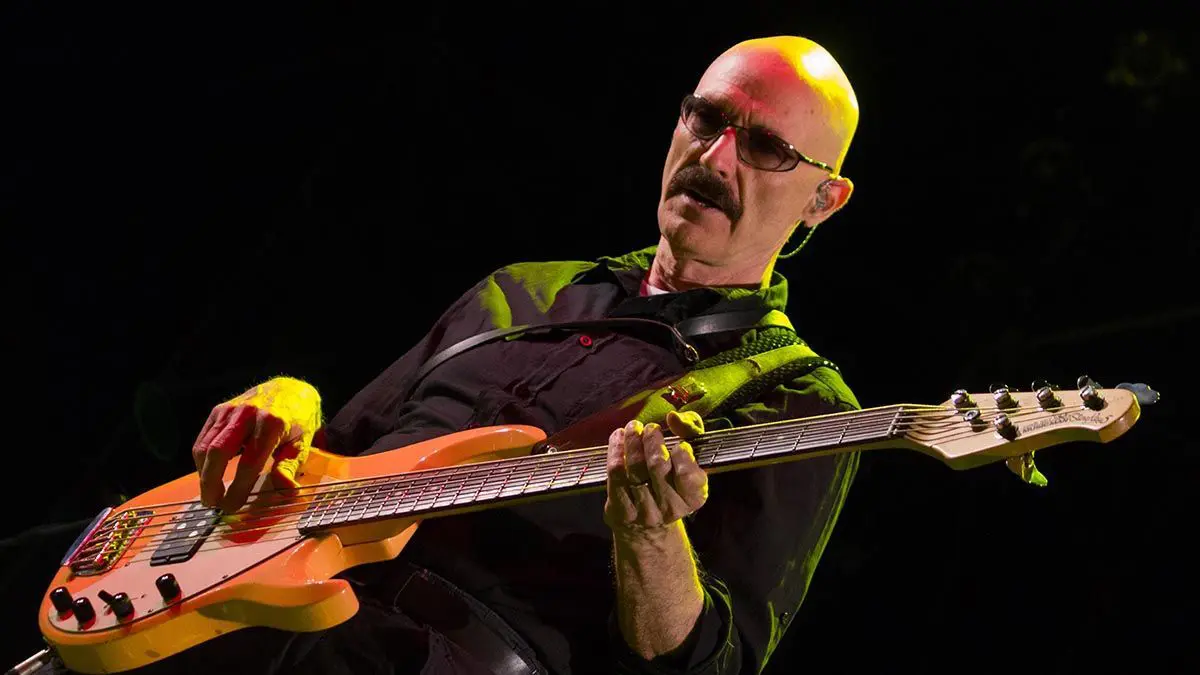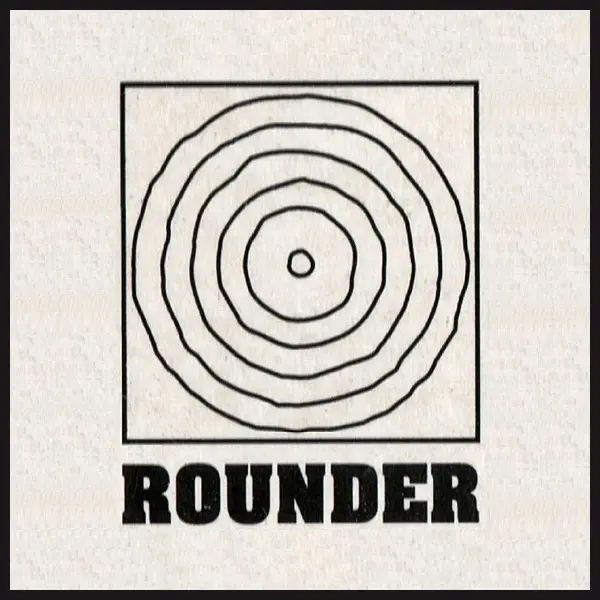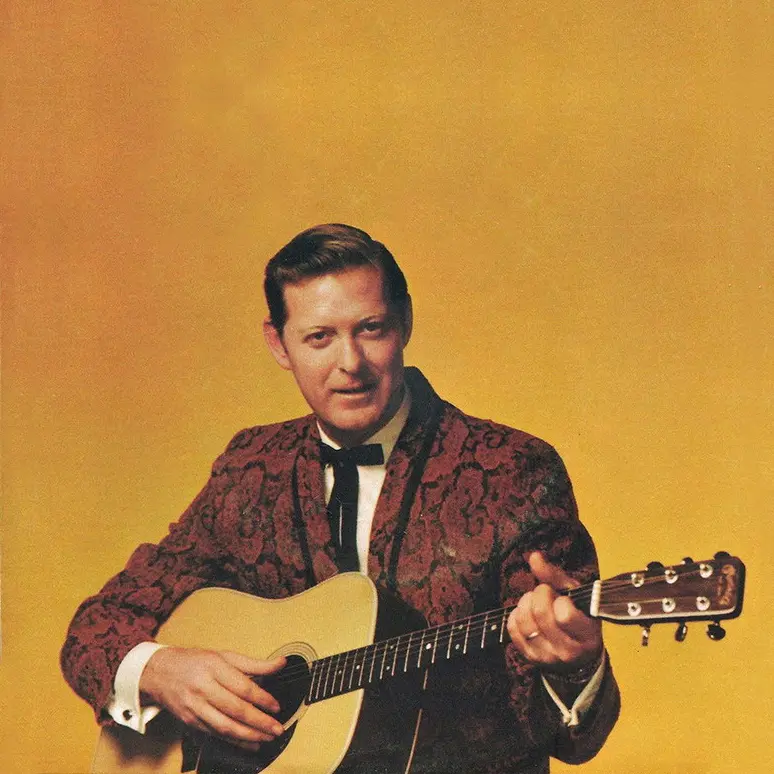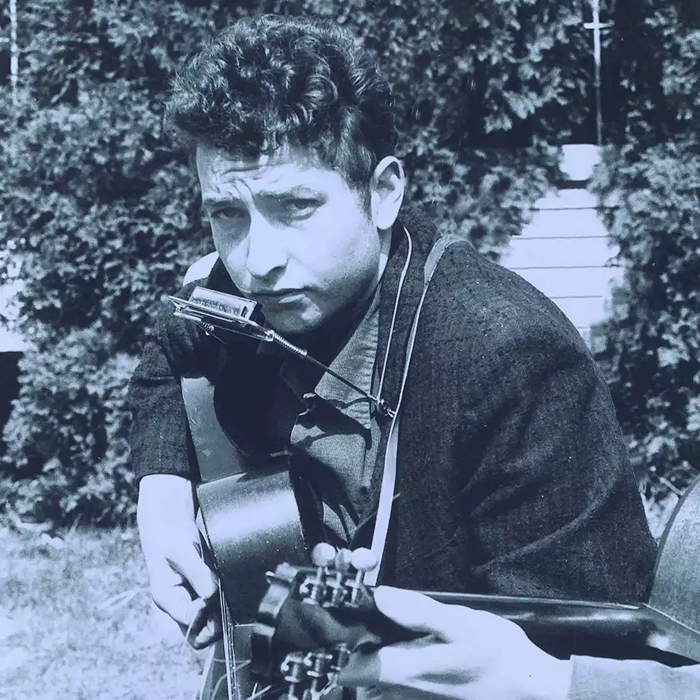Bill Chinnock
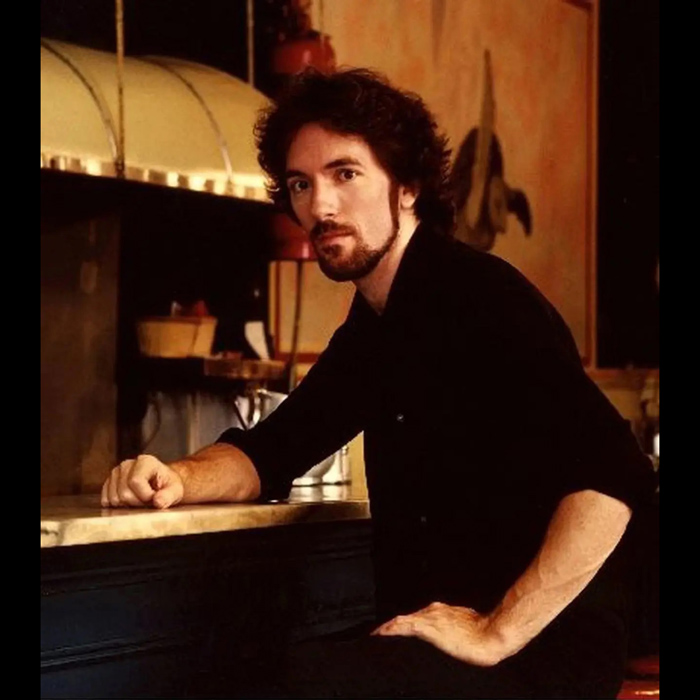
The man who discovered and/or developed Count Basie, Billie Holiday, Pete Seeger, Aretha Franklin, Bob Dylan, Leonard Cohen and Bruce Springsteen – John Henry Hammond – once described Bill Chinnock as “the real essence of American music.”
And that’s the kind of praise any roots rocker like Chinnock would be honored to have as their epitaph. So would any artist playing any variety of deep-rooted American music, from jazz, blues, gospel, folk and funk to R&B, rock, country, bluegrass and hip-hop.
Overview
A profoundly expressive singer, soulful slide and electric guitarist, ferocious harmonica player, tasteful pianist, mesmerizing performer and consummate songwriter, Chinnock was a powerful presence on the stage and in the studio, a ruggedly handsome man with a muscular voice that practically demanded to be seen and heard. At his peak, he delivered the sort of ultra-high-octane, blues-blaring shows that knocked crowds off their seats within minutes of his stepping on stage.
In the late ‘60s, Chinnock was a foundational figure on the Jersey Shore scene that birthed Bruce Springsteen and The E Street Band, Southside Johnny and The Asbury Jukes, Willy and Mink DeVille and Looking Glass. When he wasn’t headlining, he was opening for a laundry list of blues greats from whom he’d learned and eventually mastered his craft including Albert King, Sonny Terry & Brownie McGee, Willie Dixon, James Cotton and John Lee Hooker.
Chinnock recorded 10 albums on both major and minor labels and lived in Maine for the last 32 years of his 59-year life. “He loved the outdoors, he loved to hunt and fish and he absolutely loved Maine,” his wife Terry once said. “The music business is brutal. He would go up there to relax and get away from it all.”
Musical beginnings
Born November 12, 1947, in Newark, New Jersey, Chinnock was raised in the nearby township of Milburn. He was playing in bands by the time he entered junior high school and between his late teens and early 20s he fronted three local groups: The Storytellers, The Downtown Tangiers Band and Glory Road.
“Asbury Park was probably like an early Liverpool,” he told New Jersey Stage magazine in 1996 about the late-‘60s scene there. “The whole area nurtured rock ‘n’ roll and people absolutely loved it. It was a shame that when Bruce came into his own [in the mid-‘70s] since a lot of very valid artists got kind of washed away in the backwash. All of a sudden, it was impossible to escape being lumped into that melee of other artists, a kind of ‘Asbury Syndrome.’”
The Storytellers
In 1967, Chinnock fronted The Storytellers, a four-piece outfit that included Jim Meltzer (lead vocals), Bill Wolf (bass) and Chip Gallagher (drums) before becoming a five-piece with the addition of Danny Federici, later part of the E Street Band. Another future E Streeter, drummer Vini “Mad Dog” Lopez, eventually replaced Gallagher.
The group cut a local hit, “Cry With Me” (b/w “Little Boy Sad”), and appeared at Jersey Shore spots including The Upstage Club, Asbury Park’s top rock venue at the time, while making some local TV appearances. Following the Newark riots of July ’67, Chinnock moved to New York City but he remained a central figure on the Jersey Shore scene.
The Downtown Tangiers Band
In 1968, he formed The Downtown Tangiers Band, which included Federici, Lopez and bassist Wendell John. When John left the group, future E Streeter Garry Tallent took his place and they cut an album for Koppelman & Rubin Records that was never released. Among the tracks were Chinnock’s “Snake Bite,” “Burn Baby Burn” and “Crown Liquor.”
The band broke up in late 1968 when Chinnock moved to Maine for about a year. During that time, Federici and Lopez formed Steel Mill with Springsteen and bassist Vinnie Roslin. Chinnock’s “Crown Liquor” was a mainstay on their setlist.
Glory Road
In late 1969, Chinnock returned to the Jersey Shore and formed Glory Road with Tallent, drummer Bobby Williams and keyboardist Danny Mansolino (later replaced by David Sancious, who played on Springsteen’s first three albums and several later ones).
That group split when Chinnock contracted hepatitis and mononucleosis, which confined him to bed for eight months and was life-threatening at one point. Tallent, Sancious, Lopez and Federici went on the play in four early iterations of what became the E Street Band in 1972: Bruce Springsteen & The Friendly Enemies, The Sundance Blues Band, Dr. Zoom & The Sonic Boom and The Bruce Springsteen Band.
Move to Maine, Bill Chinnock Blues
In 1974, Chinnock moved to Yarmouth, Maine (about 12 miles from Portland) “just for a change of life, a cool place to live,” he told New Jersey Stage. That year, he landed a deal with Paramount Records on the recommendation of Columbia Records A&R chief John H. Hammond, who wrote the liner notes to Chinnock’s debut album, 1975’s Bill Chinnock Blues. “John couldn’t get me signed to Columbia, but he was fabulous, just brilliant,” Chinnock said in 2004. “He kind of oversaw things and managed me when I was really young.”
Road Master, ”Alive” At The Loft, Badlands
Chinnock recorded a second album for Paramount, Road Master – produced by legendary Atlantic Records engineer Tom Dowd – but it remains unreleased to this day. In 1976, he released the EP ”Alive” At The Loft on his own label, North Country Records.
In 1977, 30-year-old Chinnock released his fourth disc, Badlands, on North Country. The album featured drummer Lopez, trumpeter/flugelhornist Randy Brecker, saxophonist Michael Brecker and 18-year-old Irene Cara on backup vocals. Six years later, her iconic rendition of “Flashdance…What a Feeling,” which she wrote, topped the charts worldwide and won an Oscar and a Grammy.
Badlands came out roughly eight months before Springsteen’s Darkness on the Edge of Town album dropped in June 1978. That LP included Springsteen’s now-famous song “Badlands” – the album’s working title during recording sessions – which Chinnock has called a fluke. “My band was based out of New England [so] we really weren’t aware of what Bruce was doing,” he said in 2005. “Anything that happened was purely by coincidence.” Chinnock said that Springsteen decided to change his album’s title from Badlands to Darkness on the Edge of Town as soon as he learned that Chinnock’s own Badlands LP had come out months before.
Atlantic signing, Dime Store Heroes
Though Chinnock had pressed only 3,000 copies of Badlands, a battle ensued between several major record labels looking to sign him after its release. He went with Atlantic, which insisted on remixing the album and adding a string section and backing vocalists. The sweetened sound left many fans who loved the rawness of the original disc disappointed, to say the least.
In 1980, Chinnock recorded his second Atlantic LP, the rougher-edged Dime Store Heroes, with an all-star band that included saxophonist David Sanborn, pianist Howie Wyeth, bassists Will Lee and Tony Levin and drummer Andy Newmark. The album was re-released later on North Country and Rounder Records.
Move to Nashville, Rock & Roll Cowboys
In 1984, Chinnock relocated to Nashville to work with famed session guitarist Harold Bradley, who once said Chinnock “reminds me of Roy Orbison, and Buddy Holly because he is a musical pioneer.” He wound up saying there until 1991, making regular trips to Maine when not recording or touring. Bradley produced his next two albums, the first being 1985’s Rock & Roll Cowboys, a 10-track collection of originals first issued by Nashville-based Alliance Records and later by Epic. Among the guest artists was drummer Max Weinberg of The E Steet Band.
Learning to Survive in The Modern Age, Thunder in the Valley
The 1987, Epic issued Learning to Survive In The Modern Age, another batch of 10 originals including “Somewhere In The Night.” He recorded a duet of that song with Roberta Flack, which resulted in Chinnock winning an Emmy Award in 1987 after it was used as the theme for the CBS daytime drama Guiding Light.
Despite that success, Epic dropped Chinnock from its roster in 1987 and he returned to Atlantic to record his eighth studio outing, Thunder in the Valley, as Billy & The American Suns, a group that included guitarist Rex Stemn, bassist Steve Hill, pianist Clayton Ivy and drummer Craig Krampf. Recorded in Nashville, the LP included “Just Another Falling Star,” a tune he had originally played with The Downtown Tangiers Band nearly 20 years before.
Return to Maine, Out on the Borderline
In 1991, Chinnock returned to Maine and recorded what he said was “probably my best album,” Out on the Borderline. Released on his own label, East Coast Records, among the guest musicians were keyboardist Chalmer Davis of Little Richard’s band and The Doobie Brothers’ drummer Michael Hossack, who cowrote the track “Take This Heart of Mine.” The collaboration revived a rumor first reported in 1988 in the Springsteen fanzine Backstreets that Chinnock had replaced Michael McDonald as the Doobies’ lead singer.
In 1992, Chinnock, Federici and Tallent considered reforming The Downtown Tangiers Band and recorded some sessions but the project never gained the momentum necessary to go forward any further.
The Artist Group, Livin’ in the Promised Land
In the mid-‘90s, Chinnock founded The Artist Group, a multimedia company that produced films, high-end websites and music-related projects. He also wrote, directed and scored the feature film Forgotten Maine, which he said shows a part of the US – “small businesses like mom’s pizza shop, Joey’s hair shop,” in his words – that Americans are “trading away” to giant corporations. His final film project, which he never completed, was a documentary about his father-in-law, country-music great Dick Curless.
Chinnock released his final album, Livin’ in the Promised Land, in October 2003 on East Coast Records. The 10-track disc includes eight originals and covers of “Mystery Train” by Sam Phillips and the Civil War-era hymn “Motherless Child.” Chinnock said the LP was “a celebration of American music” since his songs “have always been a synthesis of American music styles.”
Death, Tributes
Chinnock died on March 7, 2007, and his manager confirmed the following day that he had committed suicide; for the last 10 years of his life he was afflicted with Lyme disease, which left him in severe, chronic pain. His mother had died ten days before.
As testimony to his outsized influence on the East Coast rock scene, major publications including The New York Times, The Boston Globe, Rolling Stone and Variety ran lengthy obituaries. In March 2010, friends and former bandmates held a tribute concert at The Stone Pony in Asbury Park, where Chinnock had appeared countless times, and a second tribute show was the held the next month in Portland, Maine.
Legacy
Echoing John Hammond’s comment that Chinnock was “the real essence of American music,” Bob Santelli, former vice president of the Rock & Roll Hall of Fame, called him “one of the unheralded greats of American rock ‘n’ roll.”
Original E Street band drummer Lopez, one of Chinnock’s closest friends, said his songwriting skills and work ethic were incredible. “He had his own ideas and he always had great songs,” he said. “I don’t know how to describe what songwriters do, but Bill could always come up with them. But not out of the blue. He worked hard at it.”
Lopez also pointed out something that the vast majority of people – even the biggest Springsteen fans – don’t realize: “Bill was ‘the Boss’ before Bruce,” he said.
(by D.S. Monahan)

